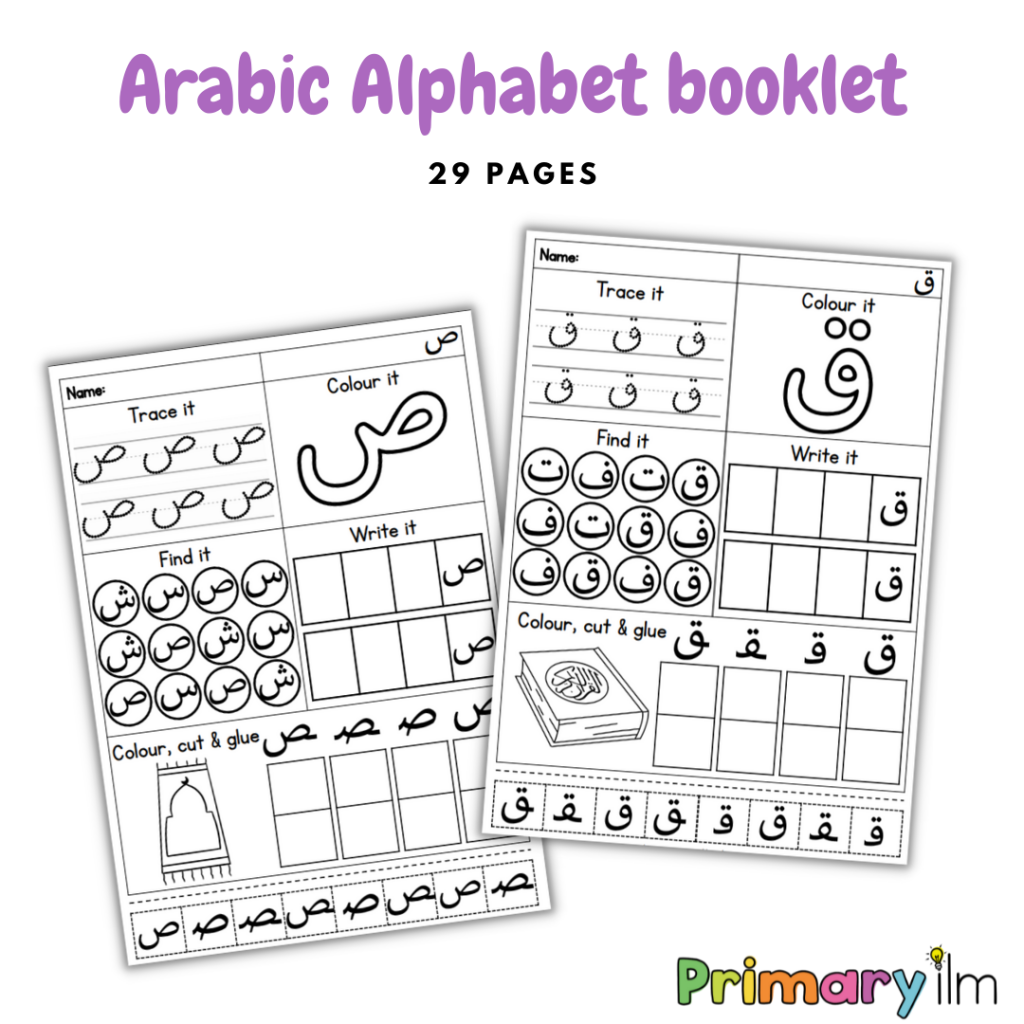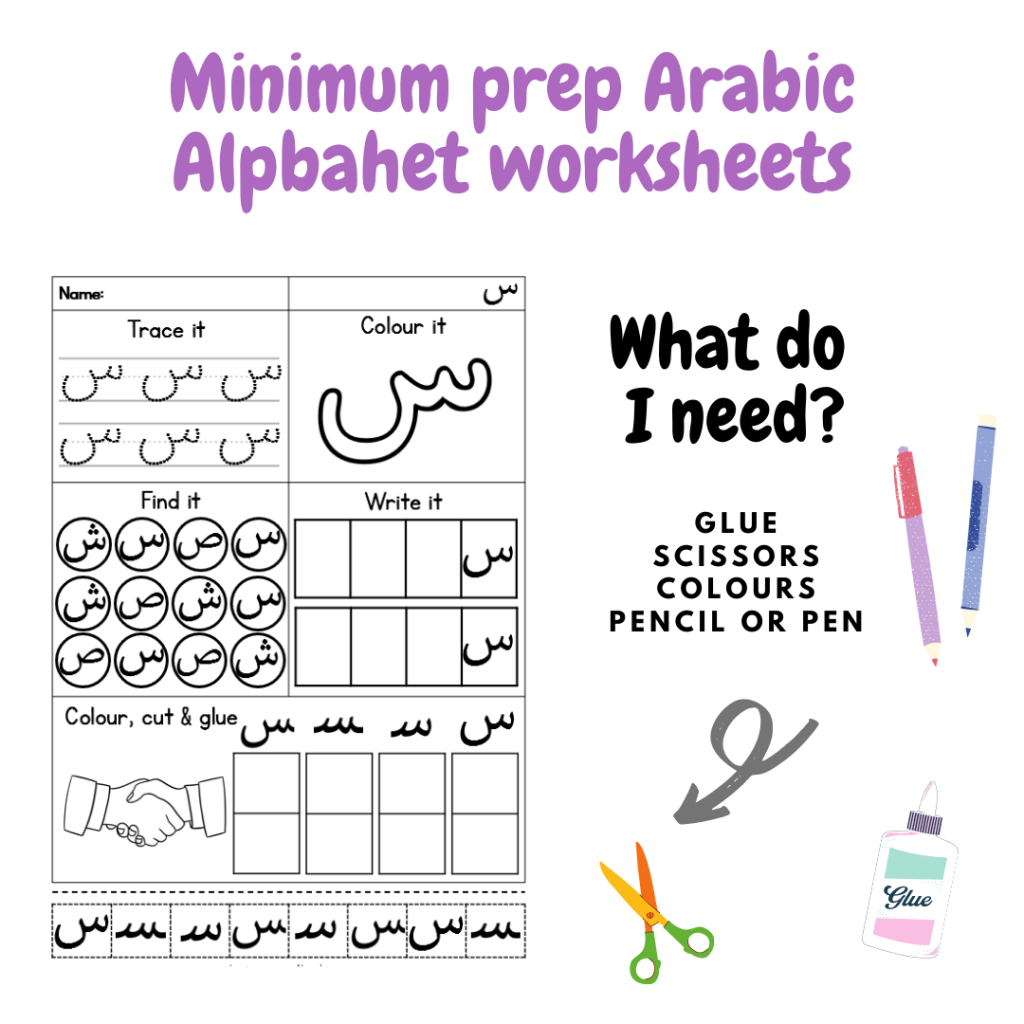Easy and Fun Worksheets on the Arabic Alphabet
These Arabic Alphabet worksheets have been a best seller for some time now! Read on below to find out why!
Being a teacher, you come across children of all abilities. You get the ones who just need you to say the letters once and they're good to go and practise themselves. Those are the ones that you don't really teach. Instead you facilitate their learning. You act as a guide and mentor and they may approach you for help if they need. But for the most part, they're able to get on with their reading. As a result they progress quickly and enjoy it due to positive feedback from you, the teacher. After a day at school, kids just want to kick back and relax sometimes. Reading Quran can be a perfect antidote to a stressful day at school.
You then get certain children who find it extremely hard to concentrate. They just can't focus on reading for more than a few seconds independently. You need to keep reminding them to read and more often than not they'll ignore you because they're too busy staring at or thinking about other things that interest them. For these children, I have found that it's hard work to try and get them to practise by themselves.
Over the years, I have watched as some children lost interest and some simply struggled reading Qaidah the whole way through. So I decided to make learning Arabic letters fun using different methods. It's a work in progress and I think children struggling is sometimes a sign that you might not be teaching them to the best of your ability. Or you might not be teaching them in a way they understand. But that's a whole other issue that I will address soon Insha'Allah.
One of the ways in which I engage my little learners who are just beginning the Qaidah, is to give them a worksheet.* This is by no means the only way but as most children go to school and use worksheets, this method is familiar to children and they can pretty much get on with it themselves with just a little input from you. I am always looking for ways to make my life easier whilst simultaneously making my pupil's learning both meaningful and fun.
I made these Arabic Alphabet worksheets around 3 months ago. They have sold consistently on Etsy since then and are also part of the Primary Ilm membership, which you can read about here.

So how do you use these Arabic alphabet worksheets?
I print these sheets out in advance and keep them in a folder. I start with Alif and give the child just 1 sheet per day. This gives them time to actually take in the letters and complete all the activities.
I have a basket of scissors, glues, pencils and colours ready on the side which they dip into as and when they need to. Alhadulillah, because it's all organised, they never ask me where anything is and just get on with their sheets independently. You might want to keep this as a little mid session activity that they can do after they've practised properly and are waiting for you to listen to them. I find that breaking up the session in this way massively helps the little ones with their concentration. They return to reading their sabaq with a renewed sense of enthusiasm and eagerness which is great to see.

You can also use this as an early finisher. For example if a child has practised, read their sabaq to me and practised again then I will allow them to finish earlier than those that are still practising. This works as a great incentive to get them to practise and focus on their sabaq.
You can also use these Arabic letter worksheets as part of a Arabic Alphabet recognition session. You could introduce the letter Baa for example, using these A4 posters.

Practical Alphabet writing practise
Whilst worksheets are a great tool for independent work, getting kids to move their bodies is super important! Make practising the Arabic alphabet fun, by getting the children to:
- Write the letter in the air first with their finger
- Practise writing it with their finger on their other hand
- Write it lying down in the air or on the floor with their finger
- Practise on their friends back (they love this)
- Practise writing it on your hand!
How can I store these Arabic letter worksheets?
You can store these Arabic alphabet sheets in drawers or in folders. Personally, I prefer putting them in a folder and labelling the folder as I have so many sheets in different categories. You could also bind the whole booklet together using a binder so it's all in one place and easy to access. This also means that you don't have to pull worksheets out every time they need the next sheet.
What can kids do once they've completed an Arabic letter worksheets?
Every time they complete a sheet, they need to show me their completed sheet. If I have time I might point at a letter and say is that a beginning, middle, end or standalone letter?
They need time and practice to get their heads around this so be encouraging and positive.
If I don't have time I'll just tell them to put the sheet in their own individual folders (where they keep all their completed worksheets and artwork).
What next?
If you're interested in other ways of engaging children in the Arabic alphabet, I've got another post lined up which will have different ways of helping children learn the Arabic alphabet. Subscribe to the website by logging in to keep updated on new resources and posts.
In the meantime, check out all our Arabic Alphabet letter resources that will help children familiarise themselves with the alphabet. Visit the RESOURCE tab and then clicking the ARABIC LETTER tab. Scroll all the way down to see our whole range of fantastic resources on offer. Some resources will need paid membership and others are free to download provided you sign up and login first.
Don't forget to add info@primaryilm.com to your email list so that our emails don't end up in your junk folder.
Subscribe below to receive Islamic resources every month!
dinardocasere1951.blogspot.com
Source: https://primaryilm.com/arabic-alphabet-worksheets/
0 Response to "Easy and Fun Worksheets on the Arabic Alphabet"
Post a Comment